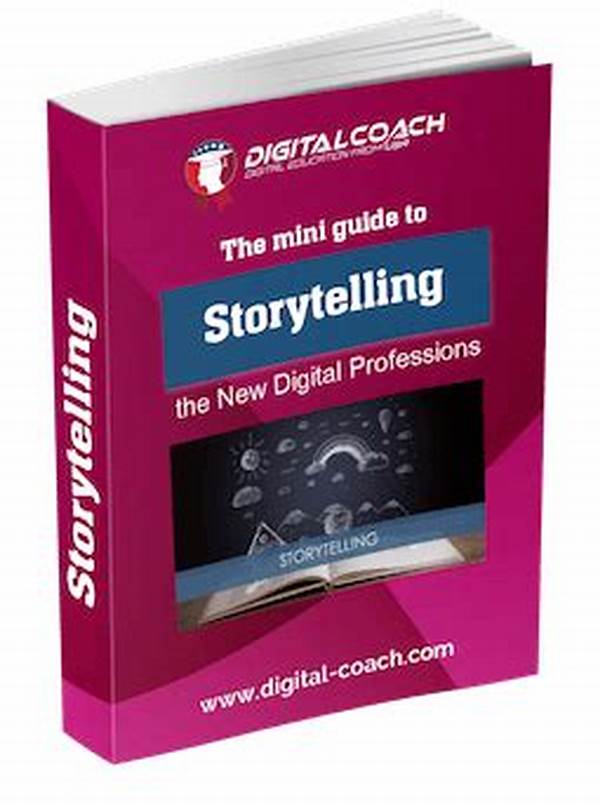The digital age has reshaped how we consume stories, particularly through the rise of ebooks. Among the many enhancements available in digital storytelling, the incorporation of images stands out as a critical element. Integrating images in ebook storytelling not only engages the reader visually but also enhances the narrative by adding depth and emotion to the written word. It transforms the reading experience into something more immersive.
The Power of Visuals in Ebooks
In the realm of ebooks, visuals play a crucial role in engaging readers. When it comes to integrating images in ebook storytelling, images serve as more than just aesthetic additions. They are vital tools that help convey emotion, clarify the narrative, and spark imagination. This rich interplay between text and image enables authors to tell their stories in more dynamic ways.
For younger audiences, visuals in ebooks can aid in comprehension by providing context and breaking down complex narratives into understandable segments. Meanwhile, for readers of all ages, the strategic use of imagery can create a memorable and resonant experience. The sensory stimulation provided by images encourages retention and can make reading more enjoyable, especially on digital platforms where attention spans can be shorter.
Today’s authors are increasingly aware of this shift, and many are experimenting with innovative ways to marry images with text. By learning the art and science of integrating images in ebook storytelling, they can transcend traditional storytelling boundaries, offering readers a multi-sensory adventure that was previously possible only in the realm of imagination or film.
Creative Integration Techniques
1. Layering and Texture: Integrating images in ebook storytelling can involve layering text over images to create a textured, three-dimensional feel that draws the reader’s eye and enhances the story’s mood.
2. Sequential Art: Some storytellers use a series of images to complement the narrative arc, guiding readers through the story visually, similar to a graphic novel.
3. Symbolism and Motifs: Images can be used as recurring motifs or symbols that highlight themes or foreshadow events, adding depth to the storyline.
4. Interactive Elements: Incorporating clickable images or interactive maps allows readers to engage directly with the story, providing a hands-on way to explore the narrative world.
5. Mood Setting: Carefully chosen images can set the tone, using color palettes and imagery that resonate emotionally with the reader and reflect the story’s atmosphere.
Challenges and Considerations
While integrating images in ebook storytelling opens up new creative avenues, it also presents several challenges. One key consideration is ensuring that images enhance rather than detract from the narrative. When images are poorly chosen or overwhelm the text, they can distract readers and disrupt the story’s flow.
Another challenge is maintaining compatibility across different devices. Ebooks are read on a variety of screens, from e-readers to tablets and smartphones, each with different capabilities. Images need to display correctly on all these platforms without sacrificing quality or compromising the reader’s experience.
Additionally, authors must be mindful of file sizes when integrating images in ebook storytelling. Large image files can slow down download times and take up excessive storage space, potentially discouraging readers from purchasing or reading the ebook.
Technological Advancements
Technological advancements have vastly improved the process of integrating images in ebook storytelling. High-resolution displays and sophisticated software tools now allow authors to include vibrant images without compromising ebook performance. Furthermore, advancements in AI and machine learning can help authors select or even generate images that align perfectly with their narratives.
These technological tools also open the door to the use of dynamic images, moving GIFs, or even video elements within ebook pages, making for a highly customizable and engaging reading experience. This technology empowers authors to push the boundaries and create interactive reading experiences that were previously unimaginable.
The Future of Ebook Storytelling
The integration of images in ebook storytelling is likely to become more prevalent as technology continues to evolve. Innovations in augmented and virtual reality suggest a future where readers can immerse themselves fully in a story world, interacting with characters and exploring settings in three dimensions.
Authors who master the art of visual storytelling are poised to captivate new audiences, especially digital natives who are already accustomed to multimedia environments. By continuing to explore and experiment with new formats, they will redefine the possibilities of ebook storytelling, ensuring that the medium remains vibrant and exciting.
Closing Thoughts on Visual Narratives
The role of visuals in storytelling has evolved dramatically with the advent of ebooks. By integrating images in ebook storytelling, authors can engage readers more deeply, telling richer and more immersive stories. This blending of text and image creates a dynamic narrative experience that appeals to a diverse range of readers.
In the age of digital media, where visual content often reigns supreme, ebooks that leverage the power of images are better equipped to capture the imaginations of their audience. As we continue to push the boundaries of ebook storytelling, one thing remains certain: images are not just decorative elements, but integral components of modern storytelling that promise to enrich our relationship with the written word.
